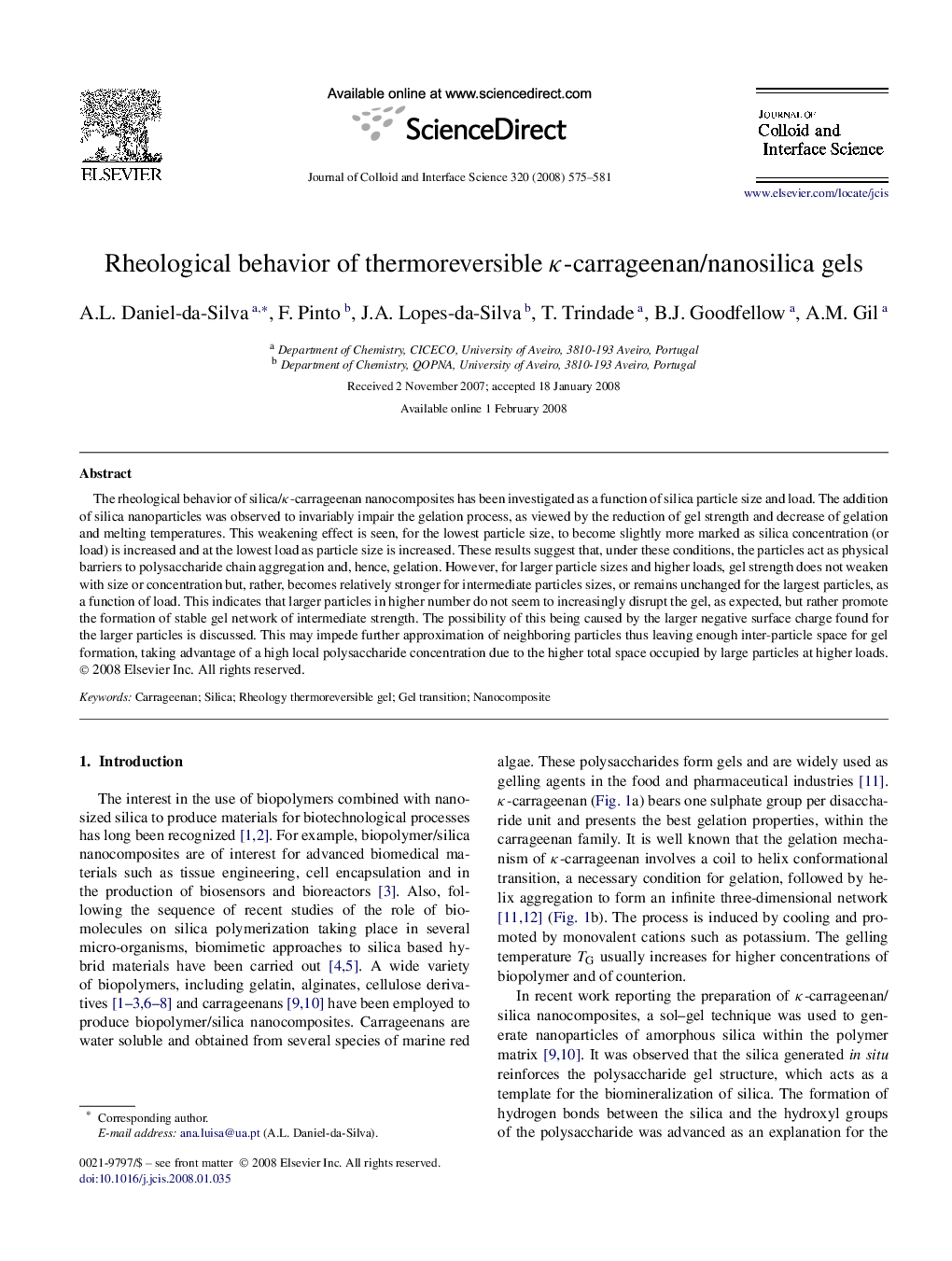| Article ID | Journal | Published Year | Pages | File Type |
|---|---|---|---|---|
| 611273 | Journal of Colloid and Interface Science | 2008 | 7 Pages |
The rheological behavior of silica/κ-carrageenan nanocomposites has been investigated as a function of silica particle size and load. The addition of silica nanoparticles was observed to invariably impair the gelation process, as viewed by the reduction of gel strength and decrease of gelation and melting temperatures. This weakening effect is seen, for the lowest particle size, to become slightly more marked as silica concentration (or load) is increased and at the lowest load as particle size is increased. These results suggest that, under these conditions, the particles act as physical barriers to polysaccharide chain aggregation and, hence, gelation. However, for larger particle sizes and higher loads, gel strength does not weaken with size or concentration but, rather, becomes relatively stronger for intermediate particles sizes, or remains unchanged for the largest particles, as a function of load. This indicates that larger particles in higher number do not seem to increasingly disrupt the gel, as expected, but rather promote the formation of stable gel network of intermediate strength. The possibility of this being caused by the larger negative surface charge found for the larger particles is discussed. This may impede further approximation of neighboring particles thus leaving enough inter-particle space for gel formation, taking advantage of a high local polysaccharide concentration due to the higher total space occupied by large particles at higher loads.
Graphical abstractThe addition of silica nanoparticles impairs the gelation process, as viewed by the reduction of gel strength and decrease of gelation and melting temperatures.Figure optionsDownload full-size imageDownload as PowerPoint slide
